We all have friends or family members who say, “Text me when you get home,” because they want the peace of mind of knowing you arrived safely. But what if something goes wrong (or you forget) and they never receive the text message? They will be worried, wondering where you are, if you are okay, etc.
In iOS 17, Apple introduced the Check-In feature to give you peace of mind or, in the worst case scenario, assist emergency services. It’s conceptually simple. Before you set off somewhere, you can create a “check-in” with someone in Messages (call them a safety partner). You can specify where you want to go and whether you’ll drive, take public transportation, or walk. Then, when you arrive, check-in automatically ends and your safety partner is alerted of your arrival. If you are delayed en route, check-in will take this into account and extend your estimated arrival time appropriately. If you fail to arrive, Check In shares your location and route with your security partner. Additionally, if you make an emergency call during check-in or your iPhone or Apple Watch automatically dials emergency services, it will notify your security partners.
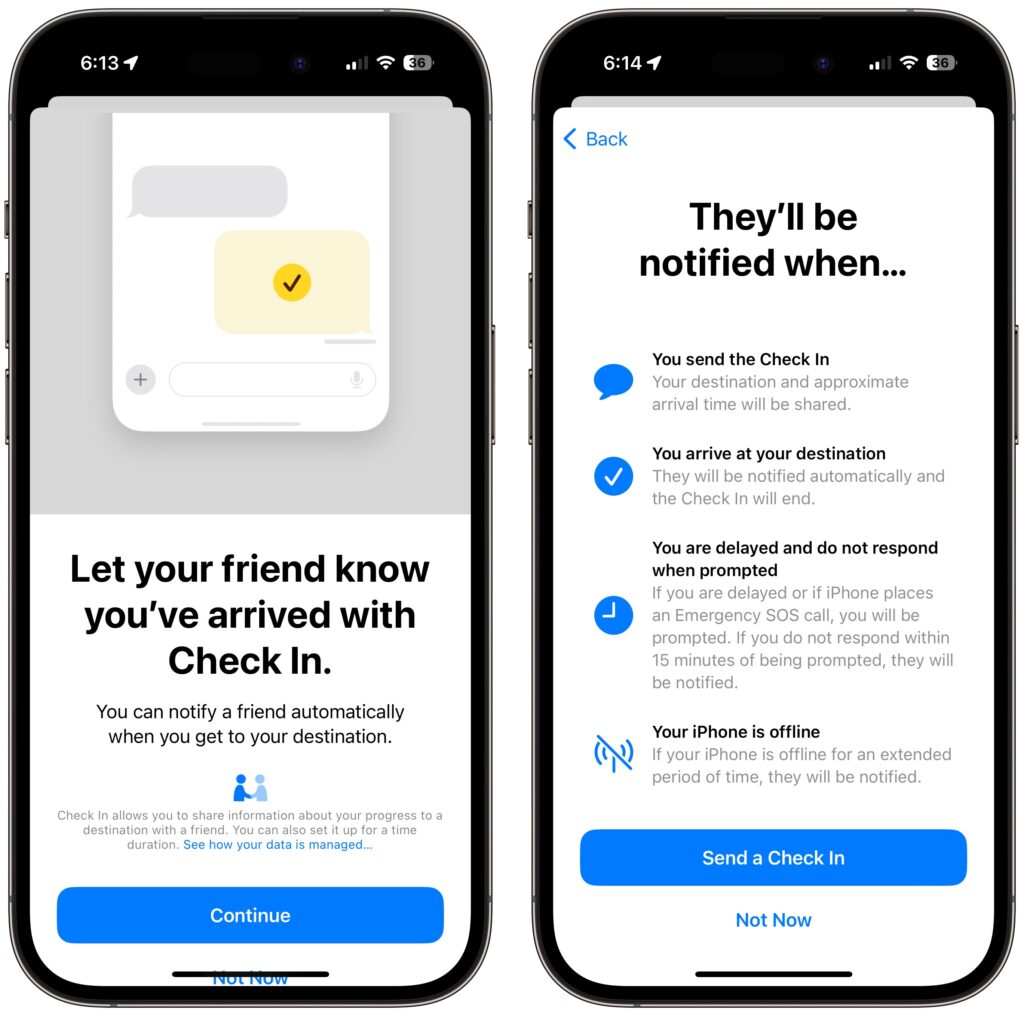
Not everything revolves around following a specific route to a location, so Check-In also supports timers. Maybe a college student is going for a one-hour cross-country run and wants a friend to check in on her to see if she’s not coming back as expected. She can use Check-in to set a 1-hour timer, share it with friends, and when the timer ends, click the End button if she comes back; if the run went well but took longer than expected, she can Add more time.
While “Check-in” seems to be geared toward friends and family, it can have business uses as well. For example, destination check-ins might be perfect for keeping tabs on coworkers heading to a make-or-break pitch presentation.
Before you start using the Check In feature with someone (in either direction), explain Check In to them and discuss the appropriate response if you or they do not successfully end the Check In. The response should probably start with a brief text message, followed by a phone call. If an initial reaching out is not met with a response, it may be appropriate to reach out to others—friends, family, neighbors, etc. At some point, depending on a variety of factors, it’s time to call law enforcement. Of course, if the other party triggers an SOS during check-in, call law enforcement immediately. At least in the United States, don’t call 911 if the person is not in your area. Instead, find the law enforcement website where the person is located and call the organization’s 10-digit number. Hope things never come to this!
Create check-in
To start checking in, follow these steps:
- In Messages, open a conversation with the person you want to be a safe partner (Check-in doesn’t currently work with group conversations).
- Click the ⊕ button to the left of the message field, click More at the bottom, and then click Check In.
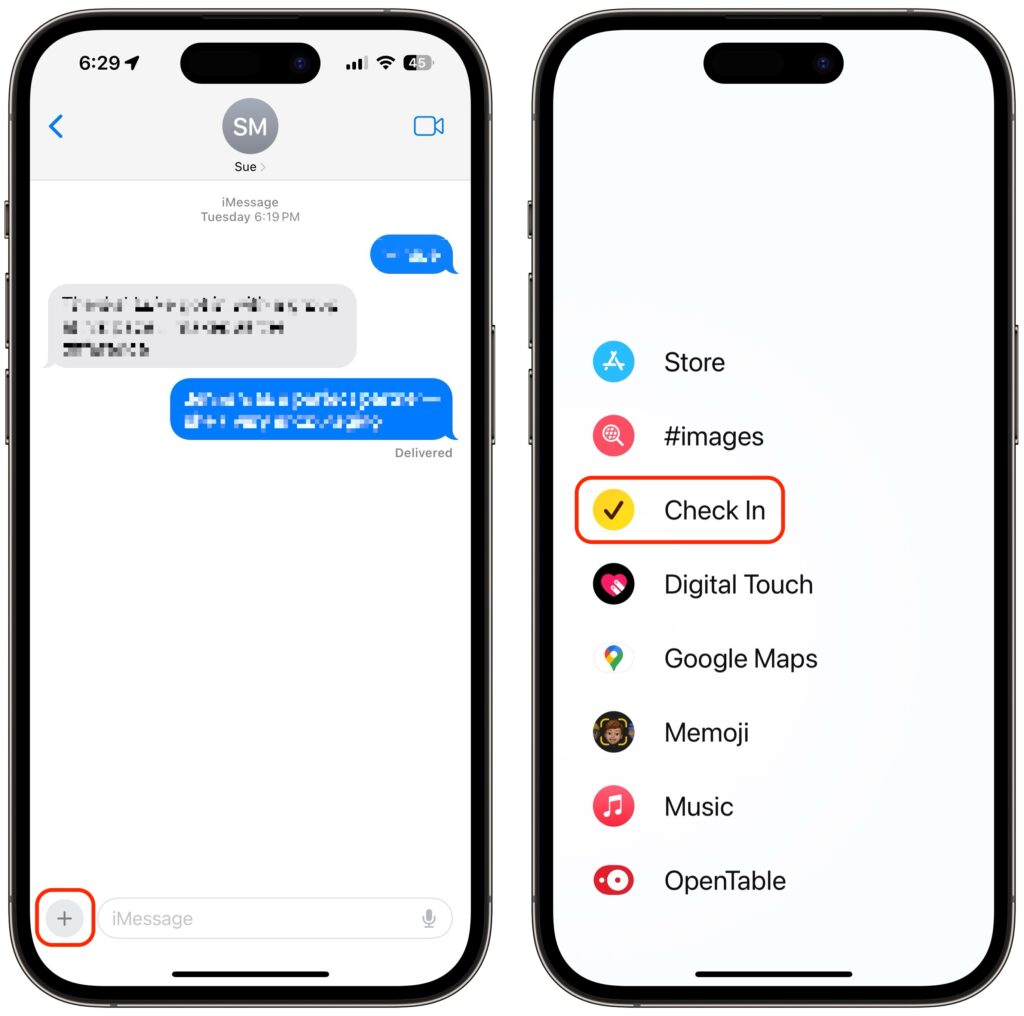
- The first time you call Check-in, Messages guides you through a series of instructional screens, one of which is important – the level of privacy for data shared with your security partner if you haven’t arrived yet. Select “Full” – there’s almost no reason why you wouldn’t want that person to be able to share your exact location and route with emergency services if something went wrong. (If necessary, adjust this setting later in Settings > Messages > Data.)
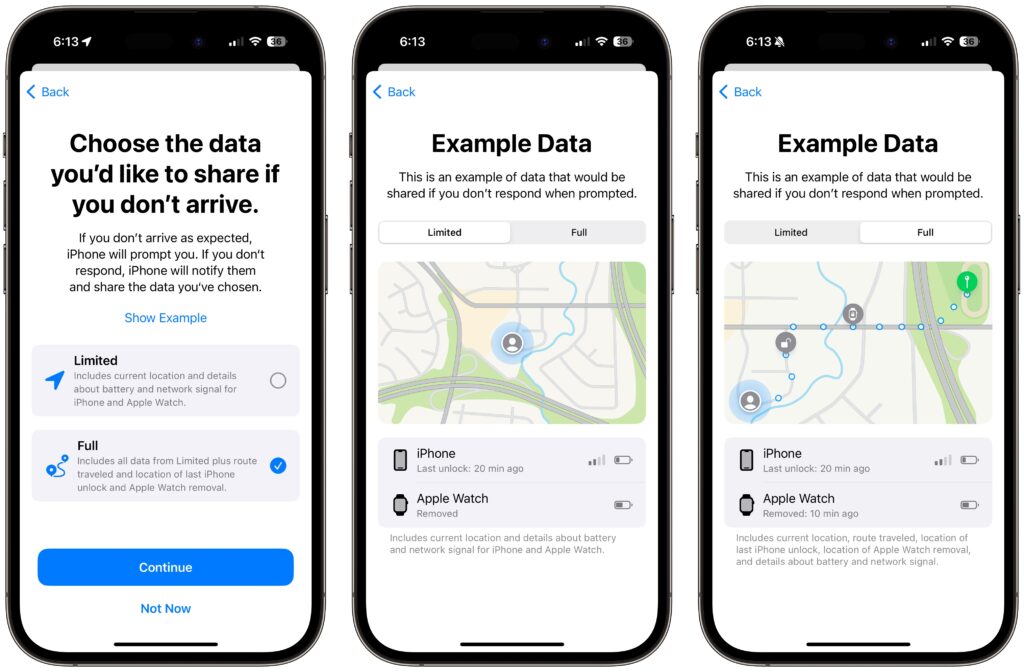
- On subsequent uses of check-in, an unsent card will appear in the message conversation, usually set to one hour in the future. The card does not send automatically, so you can customize it before sending.
- Click the edit button to adjust the timer or destination.
- To change the timer duration, use the time picker and click Done. Skip to the last step on this list.
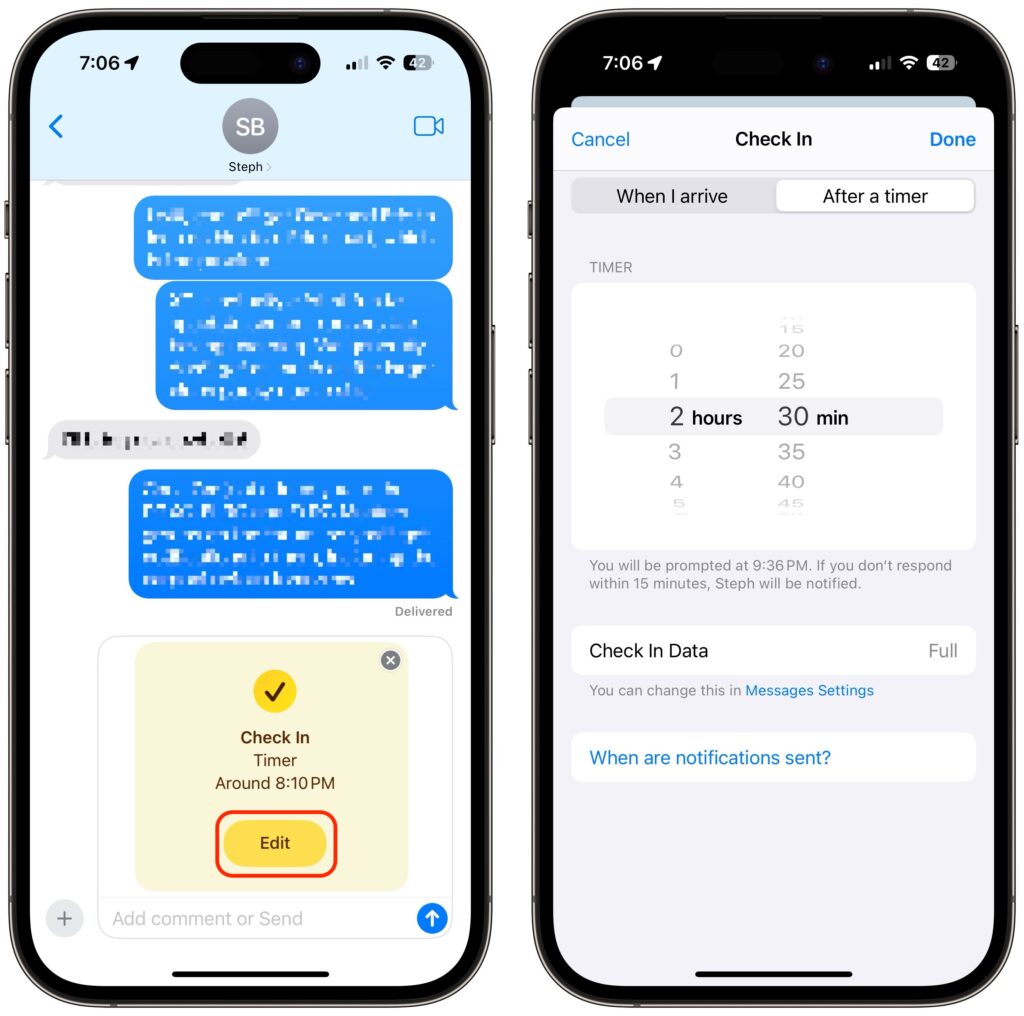
- To set a destination instead of a timer, tap “When I arrive” at the top of the screen.
- Tap the Change button and search for the location in the map or find it manually by pinching and zooming – Touch and hold on the map to place the destination pin. At the bottom of the screen, select Small, Medium, or Large to set the size of the area you’ll reach.
- Click Done to close the map and select drive, transit, or walk so Check-in can estimate your arrival time based on your mode of transportation.
- If you need extra buffer time, click “Add Time” and give yourself 15, 30 or 60 minutes by the time check-in thinks you’ll arrive. This is usually unnecessary.
- Click Done.
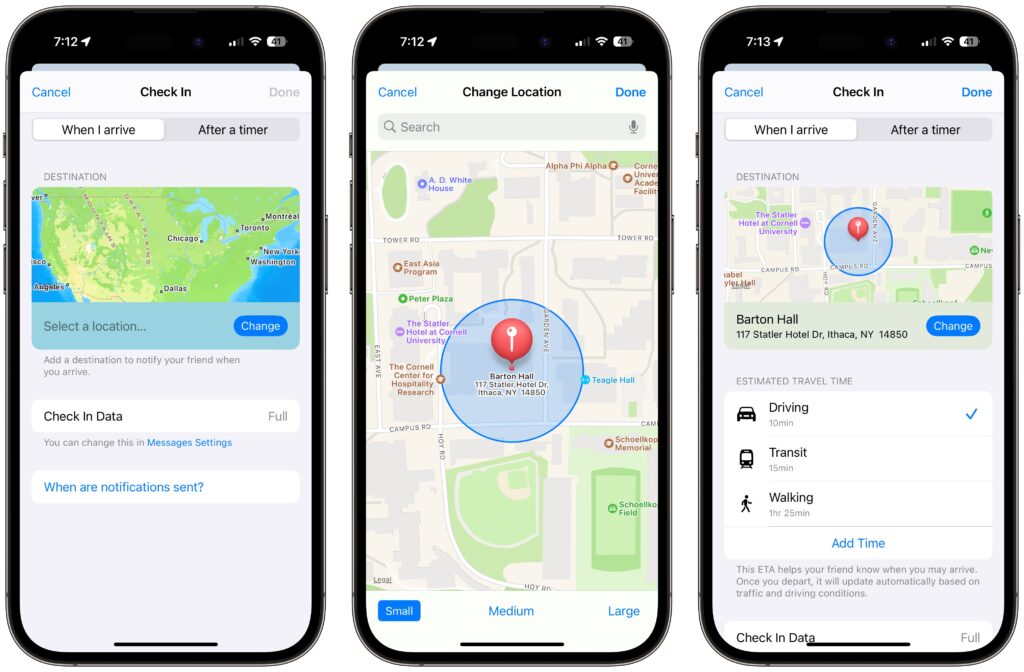
- Once you’re back to the Check-in card in the Messages conversation, click the Send button to start checking in.
Please note that security partners cannot reject sign-in cards.
End check-in
Once a check-in is triggered, it can end in a variety of ways. First, you can cancel before the timer ends or before you reach your destination. Secondly, when the timer ends or reaches the specified location, click “End” to end successfully. Third, and finally, the core purpose of Check-In is to alert your security partner if you fail to respond to the timer or arrive where and when you said you would.
- Cancel: To cancel a check-in, click the Details button on the Check-in card in Messages, click Cancel Check-in, and agree that you do not want to notify your security partner. Timers and destination check-ins look slightly different but serve the same purpose. Your security partner will only see the Check-in card in Messages to show that it has ended.
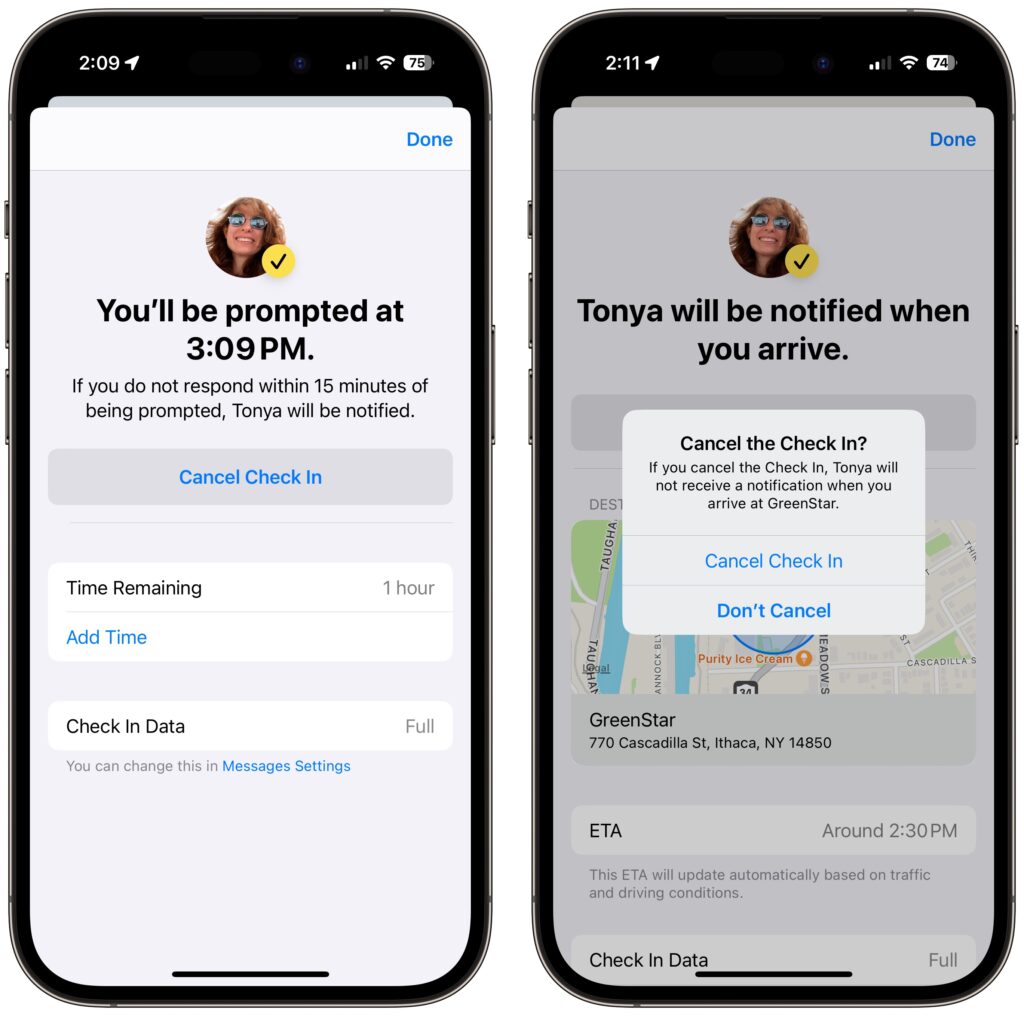
- Ended successfully: In order for the timer check-in to end successfully, you must respond when prompted by your iPhone (image below left). When this happens, all your security partner sees is a note in the sign-in card that the timer has expired (bottom right). You don’t need to interact with your iPhone to successfully complete your destination check-in – just arrive at the designated location. The security partner’s check-in card will update to indicate your arrival.
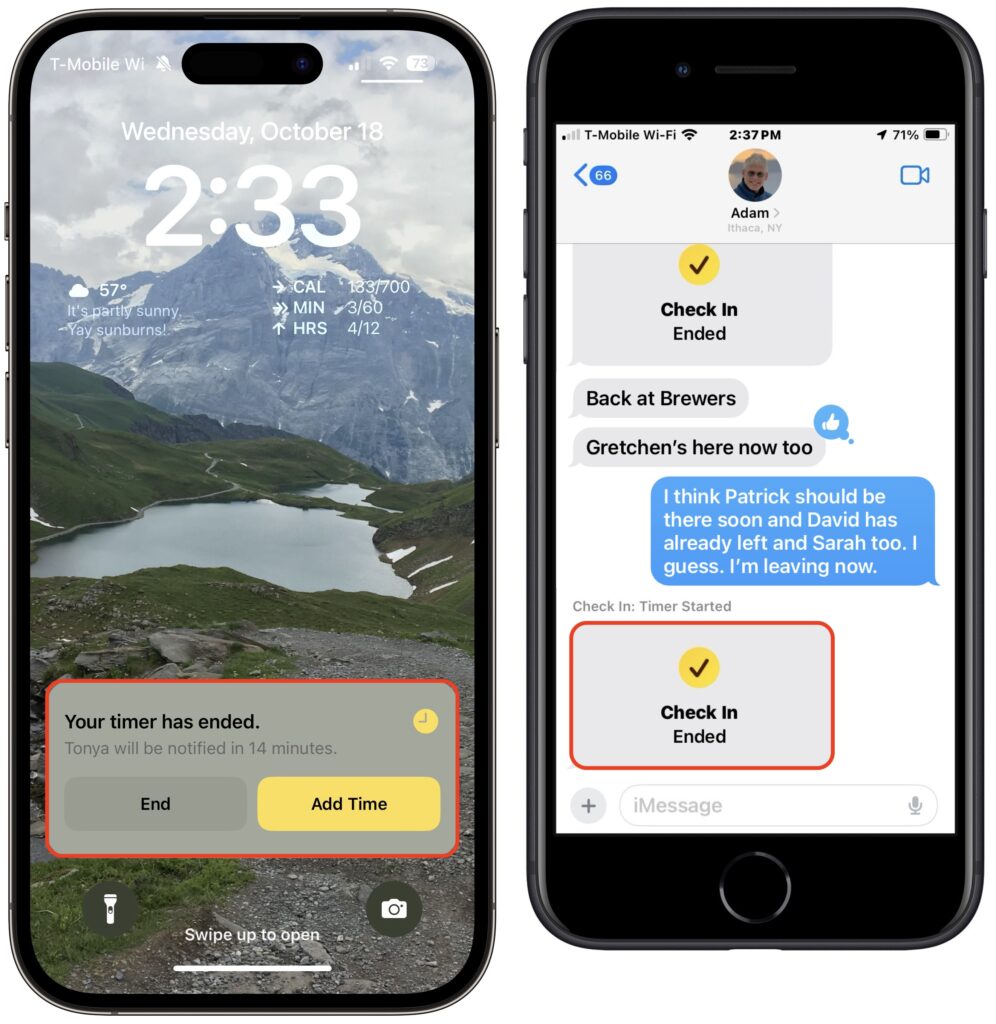
- Check-in failed (initiator): If you don’t arrive at your destination or fail to click End when prompted, Check In will give you the option to add time (below left), but after 15 minutes, will tell you that it has alerted your safety partner (Bottom center and bottom right).
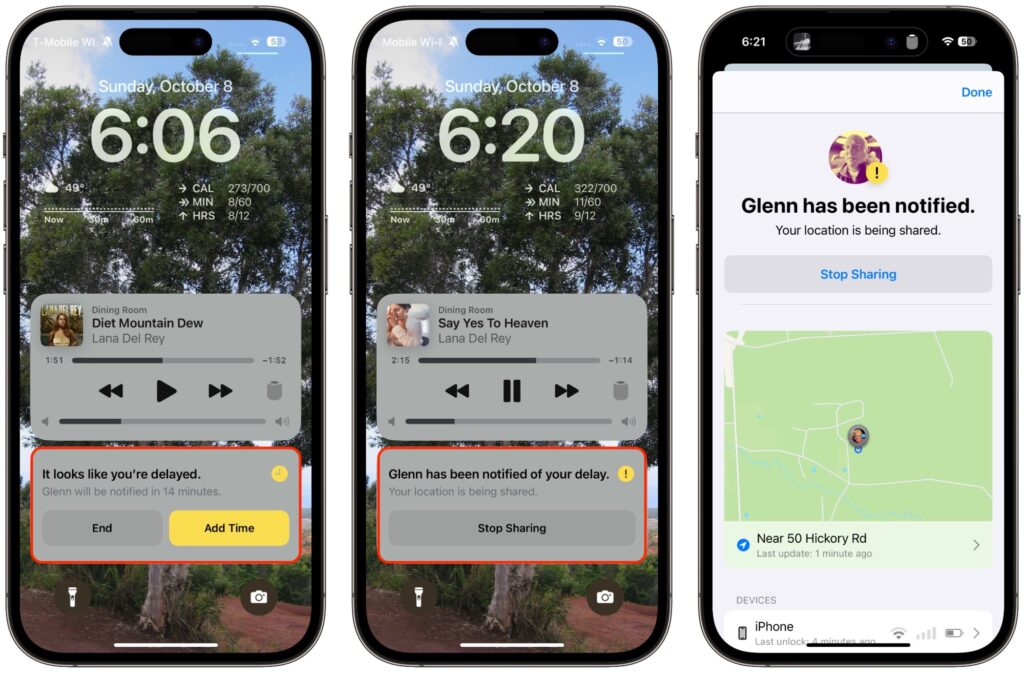
- Sign-in failed to end (security partner): Even more interesting is what your security partners see if you fail to complete your check-in. They’ll receive an alert and can click Details to see your location, when the device was last unlocked, and more. They then have to figure out the best way to respond based on the conversation you set up.
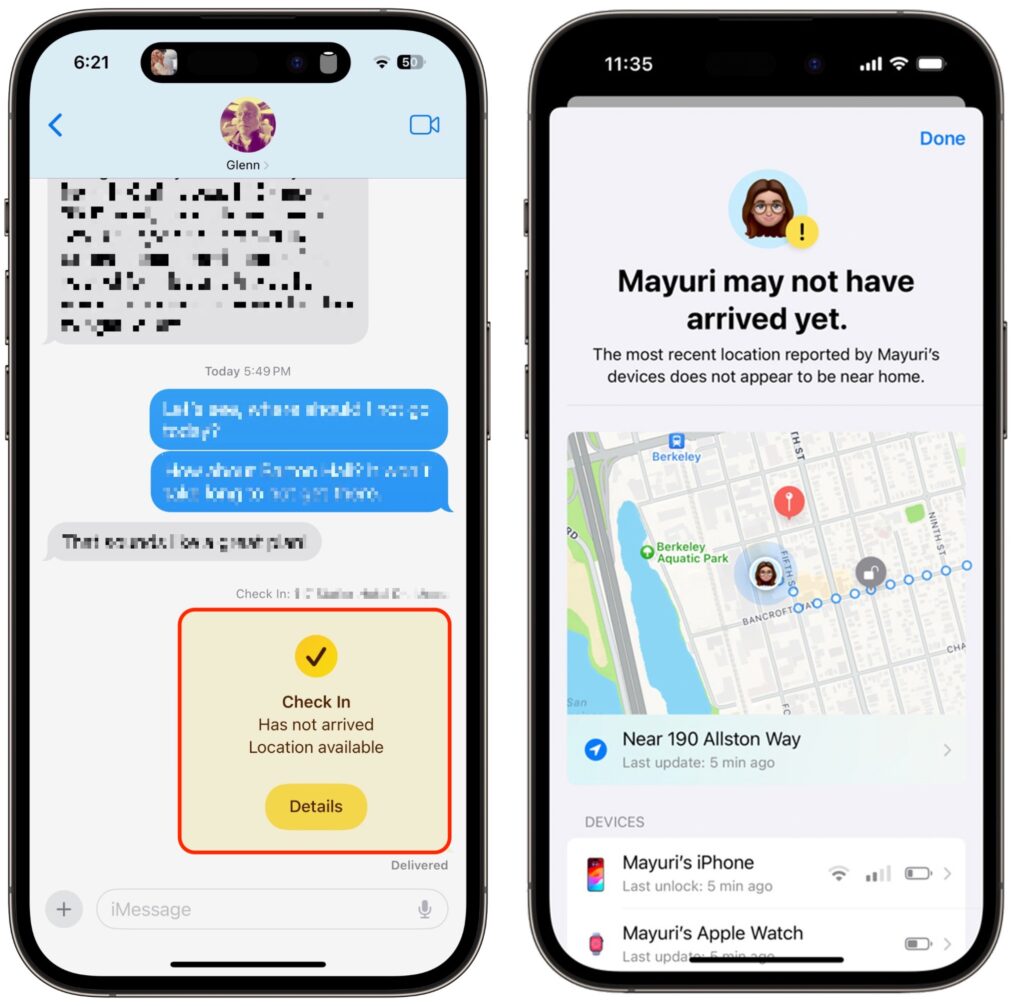
It may take some practice to get comfortable using check-in, so it’s worth testing it in everyday situations before using it when it really matters. After using it a few times, you may notice that Siri Suggestions launch it for you, making it easier to launch it regularly. We hope you find it gives you peace of mind and, in the worst-case scenario, helps someone in need of emergency services.
(Featured image via iStock.com/PeopleImages)